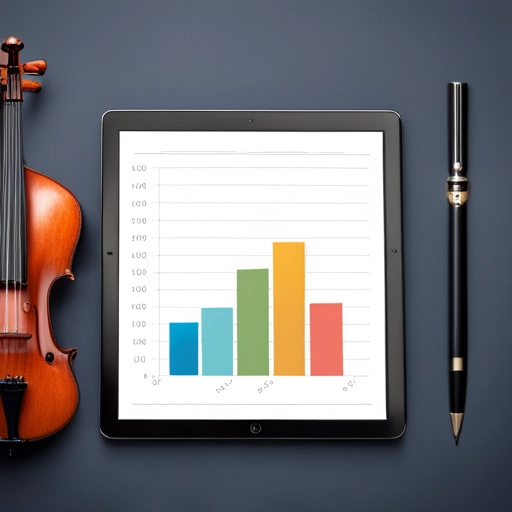
Music education has come a long way in recent years, and it continues to evolve. With the advent of new technologies and changing cultural norms, the future of music education is an exciting topic. In this blog post, we will explore some of the trends and predictions that are shaping the way we teach and learn music.
1. Technology and Music Education
Technology has had a significant impact on music education, and this trend is likely to continue. Here are some ways that technology is changing music education:
- Online music lessons: With the rise of video conferencing software, it’s easier than ever for students to take lessons from anywhere in the world.
- Music apps: There are a plethora of music apps available that can help students learn music theory, practice their instrument, and even create their own music.
- Digital music production: Digital audio workstations, such as Logic Pro X and Ableton Live, are becoming more affordable and accessible, allowing students to create professional-quality music on their own.
2. Diversity and Inclusion in Music Education
In recent years, there has been a growing recognition of the need for diversity and inclusion in music education. Here are some ways that this trend is manifesting:
- Culturally responsive teaching: Teachers are being trained to incorporate diverse cultural perspectives into their teaching to make music education more inclusive.
- Reimagining the canon: There is a growing movement to expand the repertoire of music taught in music education to include more works by women, people of color, and other underrepresented groups.
- Access to music education for all: Efforts are being made to ensure that all students have access to quality music education, regardless of their socioeconomic status or background.
3. Interdisciplinary Approaches to Music Education
Music education is increasingly being seen as a way to support learning in other subject areas. Here are some ways that interdisciplinary approaches are being used:
- STEAM education: In STEAM (Science, Technology, Engineering, Arts, and Mathematics) education, music is used as a way to teach concepts in science and mathematics.
- Music therapy: Music therapy is being used to support students with a range of needs, from those with developmental disabilities to those with mental health concerns.
- Cross-disciplinary collaborations: Musicians are collaborating with scientists, engineers, and other professionals to create new technologies and explore new ways of understanding music.
Conclusion
The future of music education is exciting and full of possibilities. As we continue to explore new ways of teaching and learning music, it’s important to keep diversity, inclusion, and interdisciplinary approaches in mind. By doing so, and keeping in mind these music education trends, we can ensure that all students have access to quality music education that inspires and enriches their lives.
References
- Campbell, P. S., Scott-Kassner, C., & Kassner, M. (2016). Musician and teacher: An orientation to music education. Waveland Press.
- Gouzouasis, P., & Bakan, D. (2019). The Oxford handbook of social justice in music education. Oxford University Press.
- Kratus, J. (2012). Music education at a crossroads: Realizing the goal of music for all. Routledge.
- National Association for Music Education. (2019). The importance of music education. Retrieved from https://nafme.org/20-important-benefits-of-music-in-our-schools/.


